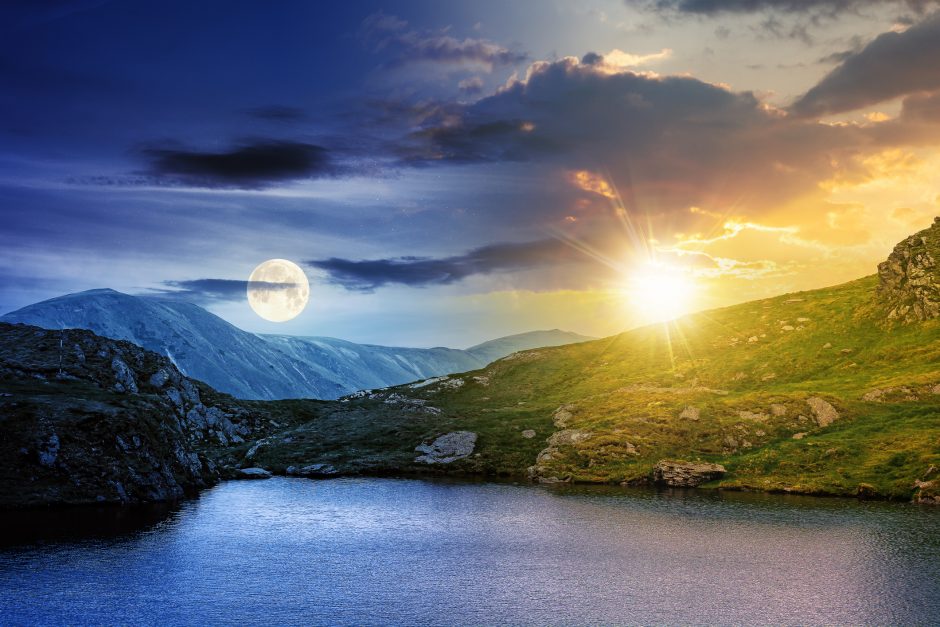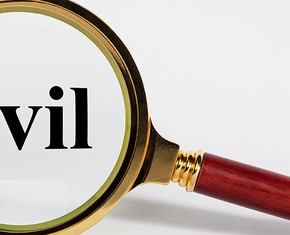The views expressed in our content reflect individual perspectives and do not represent the authoritative views of the Baha'i Faith.
I must’ve driven my parents crazy with questions as a kid. I probably asked “Why” a hundred times a day. “Curiosity killed the cat,” my mother kept telling me, but our cat seemed fine, so I kept asking.
If you’ve ever raised, or been, a curious four-year-old, you probably know the drill.
One of my very earliest burning philosophical conundrums occurred to me at the age of four on January 1st, New Year’s Day. My family lived in a farm community in eastern Washington State near the Canadian border, and, as usual for the middle of winter, we had several feet of snow on the ground. So I asked my parents “Why does New Year’s come today? The year isn’t new yet, it’s still old and cold.”
They laughed – kids say the darnedest things, apparently – and told me that’s just the way it is. Still, after that I always wondered why the new year didn’t fall on the first day of spring, where my four-year-old mind insisted it logically and rightfully belonged.
Eleven years later, in high school, I first learned about the Baha’i Faith.
This new religion intrigued me, so I investigated, went to Baha’i meetings, read Baha’i books, and tried to deepen my knowledge of the Faith for the next three years. Right away, though, the Baha’i teachings made imminent sense to me – especially the core principles of the oneness of humanity, the essential unity of all faiths and the agreement of science and religion.
Eventually, as I studied the teachings and got to know the Baha’is themselves, I found that my questions were welcomed, not scoffed at or shunned. My curiosity increased, I felt secure in asking more questions. I realized that was why the Baha’i Faith had no clergy – because the Baha’i principle of independent investigation of the truth actually encourages questions.
RELATED: Naw-Ruz: It’s a New Day, and a New Year!
At the point when my questions had been answered, I was just about ready to declare my belief in Baha’u’llah’s beautiful Faith and become a Baha’i. But right before that happened, my unanswered four-year-old’s curiosity about New Year’s popped into my head.
“So is there a Baha’i calendar?” I asked my Baha’i friend Bob Gulick.
“Oh, of course,” he said, happy to tell me about it. “Every new religious dispensation brings a new calendar. The Baha’i calendar has 19 months of 19 days each, with an intercalary day period of four days, five days in a leap year, which adds up nicely to 365 days. It’s a solar calendar, and a very scientifically-advanced one, because its structure allows for variations in the earth’s orbit around the sun.” Bob, an economist and a UC Berkeley professor, loved science.
“That’s fascinating,” I said, wondering whether I’d found the answer to my longstanding question.
I didn’t completely understand why this small detail seemed so important to me, either. Maybe it had something to do with my childhood, and the rigid way I was raised in the Protestant tradition. Independent investigation of the truth, seeking answers to all the questions I had as a child, was definitely discouraged in our local church. I had been taught to just accept and believe what I was told by the minister and by the accepted doctrine. That didn’t really work for me – which explained why I was searching.
“So when is the Baha’i New Year?” I finally asked.
“Ah!” Bob told me, “It’s called Naw-Ruz – which just means ‘New Year’ in Persian. It’s always on the vernal equinox in March.”
Thrilled, I let out a big breath I hadn’t been aware I was holding. Finally! No more cold, dark New Year’s day. “Wonderful!’ I said, the words rushing out. “You know, Bob, even as a child, I never could figure out why New Year’s wasn’t on the first day of spring! It seemed so bizarre, so wrong to put it in the middle of winter …”
Bob seemed to understand, but he gently corrected me.
“Well, you’re right; Naw-Ruz is on the first day of spring here in the Northern Hemisphere, where most of the people in the world live. Just about every Faith celebrates that renewal of life. But of course the vernal equinox is the first day of fall in the southern part of the world. What’s important is that the sun illuminates the world equally on that day. The Baha’i writings say that’s a symbol of God’s message.”
RELATED: The Baha’i Festival of Naw-Ruz, Explained
Bob went to his extensive Baha’i library, pulled out a book, and read me this quote about Naw-Ruz from a letter written by Abdu’l-Baha:
From time immemorial this day has been consecrated for in this there is a symbol.
At this moment the sun appears at the meridian and the day and night are equal. Until today the North Pole has been in darkness. Today the sun appears on the horizon of the North Pole. Today the sun rises and sets at the equator and the two hemispheres are equally illumined. This sacred day, when the sun illumines equally the whole earth, is called the equinox, and the equinox is the symbol of the Manifestation of God. The Sun of Truth rises on the horizon of Divine Mercy and sends forth its rays. This day is consecrated to commemorate it. It is the beginning of spring. When the sun appears at the equinox, it causes a movement in all living things. The mineral world is set in motion, plants begin to shoot, the desert is changed into a prairie, trees bud and every living thing responds, including the bodies of animals and men.
The rising of the sun at the equinox is the symbol of life, and likewise it is the symbol of the Divine Manifestations of God, for the rising of the Sun of Truth in the Heaven of Divine Bounty established the signal of Life for the world. The human reality begins to live, our thoughts are transformed and our intelligence is quickened. The Sun of Truth bestows Eternal Life, just as the solar sun is the cause of terrestrial life.

Every day since then, I’ve celebrated Naw-Ruz, the first day of spring in the Northern Hemisphere, as New Year’s Day. I’ve learned, too, that many other cultures and religions also celebrate New Year’s on that day, variously spelled Now-Ruz, Naruz, or Nav-Roz. Mostly, though, I’ve finally answered that burning question I had as a four-year-old boy. Today, alongside all the world’s Baha’is, I welcome the new year with a “Happy Naw-Ruz!” to everyone.
















Comments
Sign in or create an account
Continue with Googleor